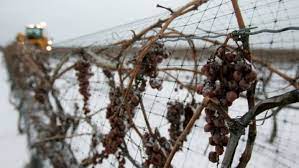The wine sector in British Columbia has suffered greatly as a result of this year’s mid-January cold snap, which also caused disastrous crop losses in the Okanagan Valley.
A management consulting business and the non-profit Wines of British Columbia, which represents the interests of wineries in the province, recently released a report that predicts a 97–99% decline in wine and grape output throughout British Columbia.
Between January 11 and 15, temperatures dropped significantly below -20 C, killing buds that would have eventually produced fruit, according to Ben-Ming Chang, a grapevine physiologist with Agriculture and Agri-Food Canada.
He told News that the “cold temperature [has] basically killed off the buds.”
Since January, Chang has dissected a lot of grapevine buds. A healthy plant’s cell tissue should appear green when magnified, yet sample after sample has all shown brown, he claims.
Chang reports that he has inspected almost 200 samples, and he has not discovered a single living bud.
“A combination of the lower temperature and the longer exposure time to [temperatures below –20 C] resulted in the devastating damage,” he stated.
This setback follows the previous winter’s cold snap, which resulted in a two-day drop in temperatures below –20 C, which reduced wine and grape production by more than 50%.







